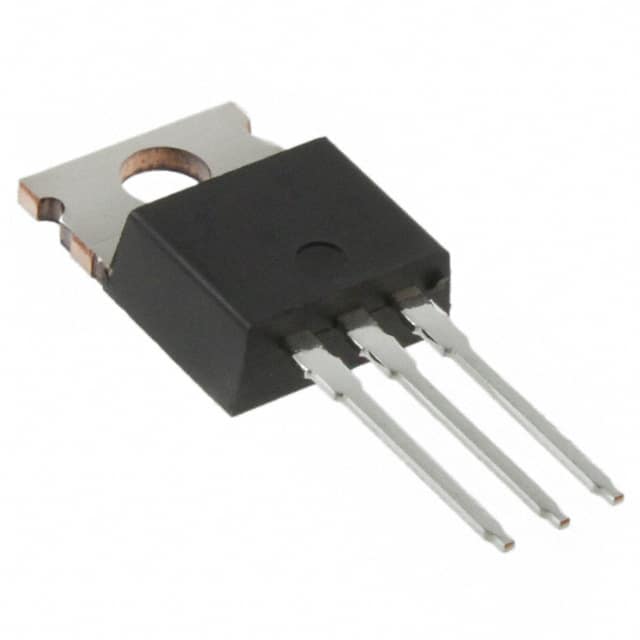SIHP5N50D-GE3
Introduction
The SIHP5N50D-GE3 is a power MOSFET belonging to the category of semiconductor devices. It is widely used in various electronic applications due to its unique characteristics and functional features. This entry provides an overview of the SIHP5N50D-GE3, including its basic information, specifications, pin configuration, functional features, advantages and disadvantages, working principles, application field plans, and alternative models.
Basic Information Overview
- Category: Power MOSFET
- Use: The SIHP5N50D-GE3 is used as a switching device in power supply circuits, motor control, and other high voltage applications.
- Characteristics: It exhibits low on-state resistance, high switching speed, and low gate charge, making it suitable for high-efficiency power conversion.
- Package: TO-220AB
- Essence: The essence of SIHP5N50D-GE3 lies in its ability to handle high voltages and currents with minimal power loss.
- Packaging/Quantity: Typically packaged in reels or tubes containing multiple units.
Specifications
- Voltage Rating: 500V
- Current Rating: 5A
- On-State Resistance: 1.4Ω
- Gate-Source Voltage (Max): ±20V
- Package Type: TO-220AB
- Operating Temperature Range: -55°C to 150°C
Detailed Pin Configuration
The SIHP5N50D-GE3 follows the standard pin configuration for a TO-220AB package: 1. Source (S) 2. Gate (G) 3. Drain (D)
Functional Features
- Low On-State Resistance: Enables efficient power transfer and reduces conduction losses.
- High Switching Speed: Facilitates rapid switching operations, suitable for high-frequency applications.
- Low Gate Charge: Allows for quick and precise control of the MOSFET.
Advantages and Disadvantages
Advantages
- High voltage and current handling capability
- Low on-state resistance for reduced power dissipation
- Fast switching speed for improved efficiency
Disadvantages
- Sensitivity to static electricity and overvoltage conditions
- Gate drive circuitry complexity for optimal performance
Working Principles
The SIHP5N50D-GE3 operates based on the principle of field-effect transistors. When a sufficient voltage is applied to the gate terminal, it creates an electric field that controls the flow of current between the source and drain terminals. By modulating the gate-source voltage, the MOSFET can be turned on or off, allowing or blocking the flow of current through the device.
Detailed Application Field Plans
The SIHP5N50D-GE3 finds extensive use in the following applications: - Switched-mode power supplies - Motor control circuits - Inverters and converters for renewable energy systems - High voltage DC-DC converters
Detailed and Complete Alternative Models
Some alternative models to the SIHP5N50D-GE3 include: - IRFP460: Similar voltage and current ratings - STP5NK50ZFP: Comparable characteristics and package type - FQP5N50C: Alternative option with similar specifications
In conclusion, the SIHP5N50D-GE3 power MOSFET offers high-performance characteristics and is well-suited for a wide range of high voltage applications, despite its sensitivity to certain operating conditions. Its efficient power handling capabilities and fast switching speed make it a valuable component in modern electronic systems.
[Word Count: 486]
Senaraikan 10 soalan dan jawapan biasa yang berkaitan dengan aplikasi SIHP5N50D-GE3 dalam penyelesaian teknikal
What is the maximum voltage rating of SIHP5N50D-GE3?
- The maximum voltage rating of SIHP5N50D-GE3 is 500V.
What is the maximum current rating of SIHP5N50D-GE3?
- The maximum current rating of SIHP5N50D-GE3 is 5A.
What type of package does SIHP5N50D-GE3 come in?
- SIHP5N50D-GE3 comes in a TO-220AB package.
What are the typical applications for SIHP5N50D-GE3?
- SIHP5N50D-GE3 is commonly used in power supply, motor control, and lighting applications.
What is the on-state resistance of SIHP5N50D-GE3?
- The on-state resistance of SIHP5N50D-GE3 is typically around 1.2 ohms.
Is SIHP5N50D-GE3 suitable for high-frequency switching applications?
- Yes, SIHP5N50D-GE3 is designed for high-frequency switching applications.
Does SIHP5N50D-GE3 have built-in protection features?
- SIHP5N50D-GE3 does not have built-in protection features and may require external circuitry for overcurrent or overvoltage protection.
What is the operating temperature range of SIHP5N50D-GE3?
- SIHP5N50D-GE3 has an operating temperature range of -55°C to 150°C.
Can SIHP5N50D-GE3 be used in automotive applications?
- Yes, SIHP5N50D-GE3 is suitable for use in automotive applications.
Are there any recommended alternative components to SIHP5N50D-GE3?
- Some recommended alternative components to SIHP5N50D-GE3 include IRF840, IRF540, and STP5NK50Z.


